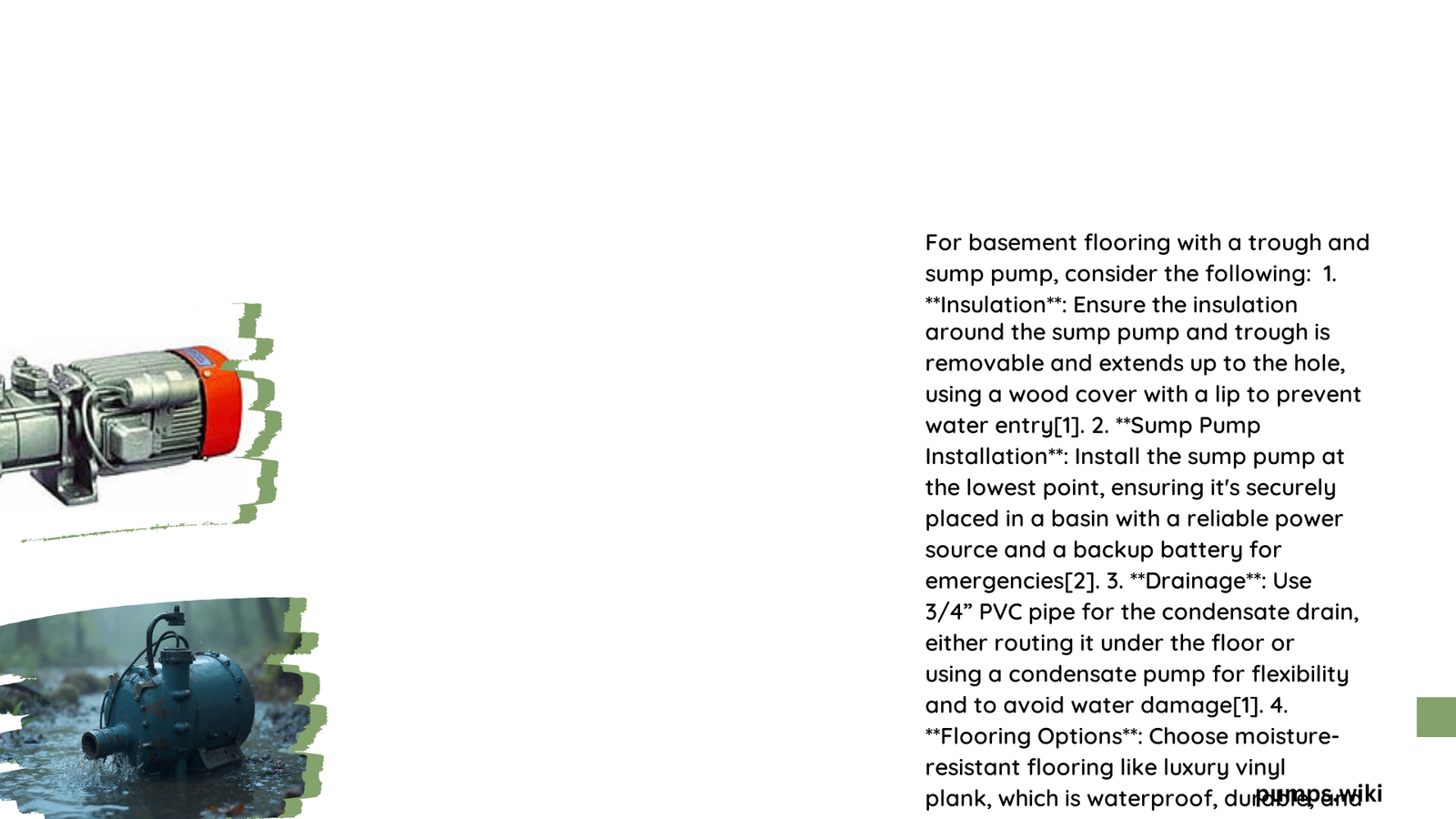Basement flooding can devastate your home’s foundation and living space. Effective basement flooring with trough and sump pump systems provides critical protection against water damage, combining specialized materials and drainage technologies to keep your basement dry, functional, and structurally sound. Homeowners can prevent costly water-related repairs by implementing strategic flooring solutions that work harmoniously with advanced drainage infrastructure.
What Makes Basement Flooring with Trough and Sump Pump Unique?
Basement flooring with trough and sump pump systems represents a sophisticated approach to water management. Unlike traditional flooring, these specialized solutions integrate drainage capabilities directly into the floor design, ensuring maximum water protection.
Why Choose Specialized Basement Flooring?
Water management in basements requires more than standard flooring. The right approach involves:
- Elevated Flooring Design: Allows water to flow underneath
- Drainage Compatibility: Works seamlessly with trough systems
- Moisture Resistance: Prevents long-term water damage
What Are the Best Waterproof Flooring Materials?

| Material | Water Resistance | Cost per Sq. Ft. | Installation Difficulty |
|---|---|---|---|
| Max Tile Raised Floor Tile | High | $3-$5 | Easy |
| Modular Carpet Squares | Moderate | $2-$4 | Very Easy |
| StayLock PVC Tiles | Very High | $3-$5 | Easy |
How Do Raised Tiles Enhance Basement Protection?
Raised floor tiles create critical advantages:
– 5/8 inch elevation prevents direct water contact
– Thermal buffering reduces moisture condensation
– Allows continuous airflow beneath flooring
– Easy to remove and replace if water damage occurs
What Technical Considerations Matter?
Flow Rate and Pump Capacity
Successful basement flooring with trough and sump pump depends on:
1. Matching pump capacity to potential water volume
2. Ensuring drainage channels remain unobstructed
3. Regular maintenance of pump and drainage system
Installation Best Practices
Critical steps include:
– Thoroughly dry subfloor before installation
– Maintain clear paths for water drainage
– Use interlocking tiles for easy access to sump pump
– Implement dehumidification during and after installation
How to Maintain Your Basement Flooring System?
Maintenance checklist:
– Inspect drainage channels quarterly
– Test sump pump functionality biannually
– Monitor humidity levels
– Replace damaged tiles immediately
– Clean tiles with water-resistant cleaning solutions
Cost and Investment Considerations
While initial investment ranges from $2-$5 per square foot, potential savings include:
– Preventing structural water damage
– Reducing mold and mildew risks
– Extending basement usability
– Increasing property value
Professional vs. DIY Installation
| Approach | Pros | Cons |
|---|---|---|
| Professional | Guaranteed expertise | Higher upfront cost |
| DIY | Cost-effective | Requires technical knowledge |
Expert Recommendations
Professional waterproofing experts consistently recommend:
– Prioritizing drainage system integrity
– Choosing moisture-resistant materials
– Implementing multi-layer protection strategies
Final Waterproofing Insights
Successful basement flooring with trough and sump pump requires:
– Strategic material selection
– Proper installation techniques
– Ongoing maintenance
– Understanding your specific basement environment
Pro Tip: Always consult local waterproofing professionals for site-specific recommendations.
Conclusion
Investing in specialized basement flooring with trough and sump pump systems provides long-term protection against water damage, transforming your basement from a potential liability to a valuable, dry living space.
